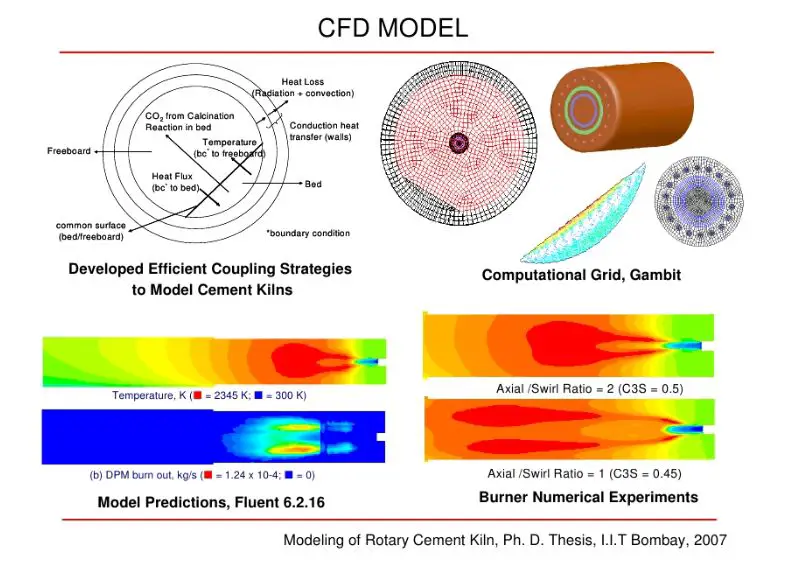Is A Kiln The Same As A Furnace?
A kiln and a furnace are both devices used for heating materials to high temperatures, but they have some key differences. Kilns are generally used for heating ceramics, drying materials, or carrying out chemical reactions while furnaces have a wider range of uses from melting metals to heat treatment of materials.
According to the 911 Metallurgist, a furnace is defined as “a device used for heating materials to very high temperatures” [1]. Furnaces are designed to reach temperatures from 500-3000 degrees Fahrenheit or higher. They utilize fuel sources like coal, oil, natural gas, and electricity to heat materials like metal, glass, and ceramics.
Kilns are specifically used for operations like firing pottery, ceramics, enameling, or heat treatment, according to the Industry Guru [2]. Kilns typically operate at lower temperatures than furnaces, ranging from 100-2200 degrees Fahrenheit. While furnaces have various configurations, kilns are usually single-chamber devices made from firebrick and ceramic fiber insulation.
Heating Method
The main difference between a kiln and a furnace is in how they heat. Kilns primarily use radiant heat while furnaces mainly use convection heat.

In a kiln, the heat radiates from the elements or flames directly onto the ware inside the chamber. The ware absorbs the radiant heat directly, allowing for fast heating. Kilns rely on radiant heat to achieve the high temperatures needed for processes like firing ceramics or glass.
Furnaces heat mainly through convection, where hot air circulates and transfers heat to the contents. Convection heating allows for uniform temperatures throughout the furnace chamber. Furnaces are better suited for lower temperature applications like annealing or heat treating metals. The circulating hot air ensures even heating.
[cite: url=https://thermcraftinc.com/industrial-kiln-oven-furnace/ title=Industrial Kilns, Ovens, or Furnaces: What’s the Difference?]
While kilns primarily use radiant heating and furnaces mainly use convection, there can be some overlap in how the two operate. Some furnaces provide radiant tubes or electric heating elements to augment the convection heat. And some kilns may circulate air to aid in heat distribution.
Purpose
The primary purpose of a kiln is for firing ceramics, such as clay, pottery, and porcelain. Kilns allow the ceramics to be heated to high temperatures, which hardens them and sets their form permanently. The temperature can vary based on factors like the clay composition and desired results. Typical kiln firing temperatures range from 1800°F to 2300°F (982°C to 1260°C). At these high heats, the clay vitrifies, meaning the silica in the clay melts and fuses it into a solid final product.
In contrast, the main use of a furnace is for metalworking and glassmaking. Furnaces enable heating metals like iron, copper, bronze, and steel to very high temperatures for purposes like melting, annealing, and tempering. This allows the metals to be cast, shaped, and heat treated. Temperatures can reach over 3000°F (1650°C). Furnaces are also used in glassmaking to melt the glass materials and produce molten glass that can then be blown or molded.
So in summary, kilns are optimized for firing ceramic materials, while furnaces are designed for extremely high temperature metal and glass work. Their heating processes and construction are tailored to these specific applications.
Sources:
https://kilnfrog.com/blogs/frogblog/what-s-the-difference-kilns-vs-furnace-vs-oven
https://thermcraftinc.com/industrial-kiln-oven-furnace/
Temperature
Kilns operate at high temperatures, but generally not as high as furnaces. Kilns are capable of reaching maximum temperatures of around 2300°F (1260°C), whereas furnaces are designed for much higher temperatures (Industrial Kilns, Ovens, or Furnaces: What’s the Difference?). This is because the purposes of kilns and furnaces differ. Kilns are meant for heating objects to change their physical or chemical properties. Furnaces are used for extracting and refining metals, which requires extremely high temperatures. While both kilns and furnaces provide enclosed heated environments, furnaces are specifically engineered to produce and withstand temperatures above 2300°F, which is the upper limit for most kilns.
Atmosphere
One of the main differences between kilns and furnaces is the atmosphere they operate in. Kilns typically operate in an oxidizing atmosphere, which means there is excess oxygen available. This allows oxidation reactions to occur readily, such as burning off combustible materials or causing changes in the chemistry of clay during firing. An oxidizing atmosphere promotes vivid colors in glazes and clays.
Furnaces often operate in a reducing atmosphere, which means there is limited oxygen availability. This atmosphere limits oxidation and even causes reduction reactions, such as removing oxygen from metal oxides to purify metals. The lack of oxygen allows metals to remain unoxidized. According to this Quora post, the atmosphere “determines the types of chemicals reactions that can occur.”
The atmosphere is a key distinction between kilns which fire ceramics and furnaces which process metals. Kilns utilize excess oxygen for oxidizing reactions while furnaces restrict oxygen for reduction reactions.
Construction
Kilns are traditionally constructed from brick or refractory materials like firebrick which can withstand high temperatures. The walls of a kiln are often very thick, up to 2 feet thick in some cases, to retain heat and allow the temperature to evenly rise inside the kiln. Kilns have an inner chamber constructed from these heat-resistant materials where the ceramic items are placed for firing.
Furnaces on the other hand are made from metals like steel or cast iron. The metal frame and exterior of a furnace allows it to reach extremely high temperatures, often over 3000°F depending on the type of furnace. Furnaces have an inner chamber lined with refractory materials to retain heat. But the outer shell being metal gives furnaces a very different look and construction than the brick kilns used for ceramics.
This key difference in construction materials stems from the difference in purpose. Kilns need thick insulating walls to control heating and cooling cycles, while furnaces use metal to withstand extremely high temperatures for metal processing.
Fuel Source
One of the key differences between kilns and furnaces is the fuel source they use for heating. Kilns typically run on electricity and use heating elements to generate heat. This allows them to reach high temperatures consistently. Furnaces, on the other hand, rely on the combustion of fossil fuels like coal, oil, or natural gas to produce heat. The fuel is burned inside the furnace, with the heat being transferred to the contents. This difference in fuel source means that kilns can offer more precise temperature control, while furnaces may be impacted by fluctuations in the fuel supply. According to discussions on Reddit, kilns are seen as more efficient than furnaces in many applications because they don’t waste heat and fuel maintaining a constant fire.
Overall, the electric nature of kilns gives them an efficiency and environmental advantage over fossil fuel-powered furnaces. However, furnaces allow the use of readily available fuels like coal and can achieve extremely high temperatures through combustion. The choice between kiln and furnace may come down to factors like operating costs, temperature requirements, and environmental impact.
Use Cases
Kilns and furnaces are designed for different use cases and types of materials. Kilns are commonly used for firing ceramics such as pottery, tiles, or bricks. The heat allows the ceramic material to vitrify and become impervious to water. Kilns are also used in glassworking for fusing and slumping glass. Enameling processes like applying colored glass powder to metal objects are also done in kilns.
Furnaces are designed for working with metals and achieving extremely high temperatures beyond the capability of most kilns. Furnaces allow melting, alloying, and casting of ferrous and non-ferrous metals. Common applications include melting scrap metal for recycling, melting gold and silver for jewelry production, melting iron and steel for foundries, and heat treating metals for hardening and tempering.
While both kilns and furnaces use high heat, their specific construction and design focuses on different use cases and materials – ceramics, glass and enameling in kilns, and metalwork in furnaces.
History
Kilns have been used for thousands of years to produce ceramics, fire bricks, and smelt metals. The earliest known kilns were pit kilns dug into the ground and dated to around 6,000 BC. These were used to fire pottery and ceramics. Over time, kiln technology evolved and began being constructed out of brick or stone. By around 4,000 BC, kilns called updraft kilns were developed in ancient Egypt to fire pottery and extract metal from ore through smelting. In updraft kilns, the fire is built underneath the kiln chamber and heat travels upward.
In comparison, furnaces started being used around 1200 BC primarily for metalworking. Early furnaces were simple hearths used to extract metal from ore through smelting. The technology evolved over time with the development of blast furnaces around 500 BC in China, which used bellows or fans to direct high amounts of air flow into the furnace to reach higher temperatures. This allowed for large scale metal production.
While kilns and furnaces have some similarities in their use of high heat, their origins, construction, and primary applications diverged over time. Kilns were earlier inventions focused on pottery and ceramics. Furnaces later emerged for metalworking and achieving higher temperatures through directed air flow.[https://thermcraftinc.com/history-industrial-kilns/][https://en.wikipedia.org/wiki/Kiln]
Conclusion
In summary, while both kilns and furnaces are used for high temperature processes like firing, drying, or baking, there are some key differences between the two:
- Furnaces typically reach higher peak temperatures (up to 3000°F) compared to kilns (around 2300°F).
- Furnaces maintain a constant temperature profile while kilns go through heating and cooling cycles.
- Kilns are commonly used for ceramics while furnaces are used for metal processing.
- Kilns often have ventilation while furnaces are fully enclosed.
- Construction differs, with kilns made of brick or ceramics and furnaces made of metal.
However, both kilns and furnaces rely on heating from fuel combustion and insulation to achieve and maintain high temperatures. They play similar roles in manufacturing processes requiring precise heating control.


